The Two UX Explained
Okay, Lexus sucked me right in with the definition of the all-new 2019 siblings, the UX 200 and UX 250h as “Urban + Xover (crossover)=UX.” They go on to say the design team’s concept was for a “modern urban explorer seeking a fresh, contemporary take on luxury driving.” Those explorers, according to Lexus will be someone buying their first Lexus and their first luxury car. I need to meet these people, they sound interesting!
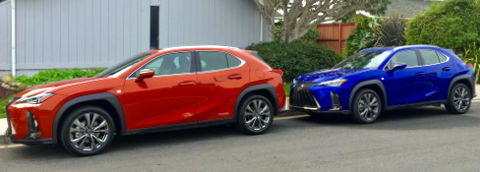
Lexus has come out with some compelling cars, crossovers and SUVs in the past few years, with many of them reviewed on Clean Fleet Report (see here and here and a longer list at the end of this review). With the addition of the UX, Lexus now has two very nice small crossovers in a segment where they previously did not have any models.
The 2019 Lexus UX is the first Lexus model built on its Global Architecture Compact, or GA-C, platform. The importance of this lightweight and rigid platform is that it offers several design and engineering elements that deliver agile handling with ride comfort, resulting in pleasing driving attributes. Toss-in a fuel-efficient gasoline engine and an even more efficient hybrid system, and the UX will have strong appeal for anyone looking for a premium compact crossover.
Gasoline Versus Hybrid
The 2019 Lexus UX comes with two power plant options that are paired with front-wheel (UX 200) or all-wheel drive (UX 250h). Clean Fleet Report first tested the UX 200 FWD with the 2.0-liter, four-cylinder gasoline engine that produced 169 horsepower. We then drove the UX 250h AWD with the same engine, but adding the Lexus Hybrid Drive system increased the total system horsepower to 181. The engines run on 87 octane and are naturally aspirated (non-turbo). Both UX models had very smooth continuously variable transmissions (CVT) with paddle shifters and driver-selectable drive modes of Eco, Normal and Sport. The UX 250h also gets an EV setting for driving around town in pure electric mode.

The gasoline-powered UX 200 has EPA fuel economy estimates of 29 mpg city/37 highway/33 combined. To maximize fuel economy in the hybrid UX 250h the Lexus Hybrid Drive system automatically switches between electric drive mode, combined electric motor and gasoline engine, and gasoline-only engine power. These transitions can be monitored by viewing dash gauges.
Fuel economy for the 2019 Lexus UX 250h is rated at 41 mpg city/38 highway/39 combined miles per gallon. The hybrid’s battery is replenished through the regenerative charging system, which converts kinetic energy into electric energy when applying the brakes or coasting and stores it in the battery. This process can also be viewed on a dash gauge where you can watch the power flow into and out of the battery and engine.
The hybrid increases in city and combined fuel economy are impressive. For that “modern urban explorer” seeking-out the newest restaurant or club, this is the type of efficiency they will want.
Driving Experience: On the Road
Clean Fleet Report’s UX 200 and UX 250h were both F Sport models. If you follow Lexus nomenclature, its F Sport line is always the sportiest of any model. The UX F Sport has a sport-tuned suspension (revised springs and stabilizer bars) with active sound control. This last feature produces the sound of up and down shifts, making the CVT (which has no gears) sound like it is going through the gears. Yes, it works, and, yes, it is pretty cool.
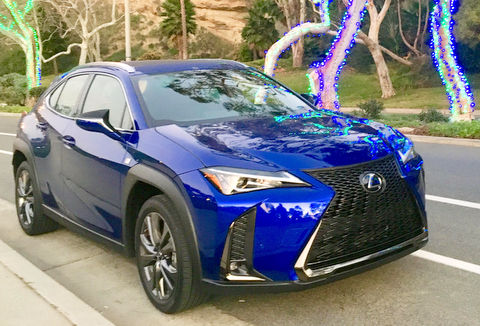
In the F Sport trim, the UX are shod with 18-inch 225/50R Bridgestone all-season run-flat tires that bring up an interesting debate. Is any performance sacrificed with the run flats worth the weight savings by having no spare? Is running this tire a toss-up for getting the most handling from a car, versus the secure feeling of being able to drive on a flat tire if necessary? No answers here—go check them out for yourself.
The UX has impressive ride and handling, with the 200 a bit more sporty, while the 250h had that extra power from the twin electric motors. The UX feels small, navigating easily through city spaces. The tight 34-foot turning radius was a pleasant discovery. Out on the road, the UX feels planted and solid, with even the biggest 18-wheeler whooshing by not presenting any problems. The combination of active cornering assist and vehicle stability control helps control understeer on turns and corners. The system automatically applies small amounts of brake pressure to the inside wheels, so corners are taken with more precision and control.
Zero-to-60 speeds are in the mid-to-high nine-second range. A couple seconds less and the UX would be in the performance or sporty category. By placing the CVT in Sport mode, the engine is forced to stay in the rev band for more sprightly performance. The sense is a linear and smooth, natural acceleration that is more than adequate for most driving situations.
The UX has a feel of authority and confidence when going down the road. The electric power-assist steering had good road feedback with the cabin isolated from common road imperfections. Wind noise was non-existent, partially due to the low 0.33 coefficient of drag.
Driving Experience: Exterior
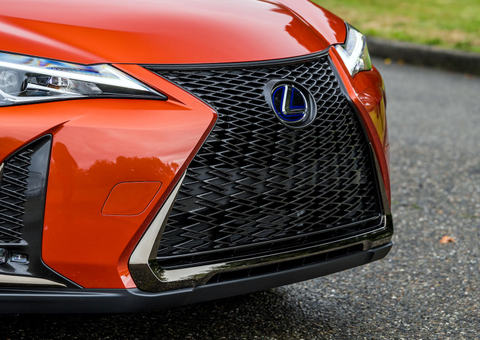
The UX is considered a compact crossover, but from some angles it looks like a hatchback. Lexus did a good design job, as many crossovers just look like smaller versions of their larger brethren. The focal point of all Lexus models is their signature spindle grill, which allows no middle-ground when it comes to liking or not liking it. I like it, especially being framed with Bi-LED headlights and the L-shaped lighting design. The UX has good proportions, with a small greenhouse area. The near flat roof has aluminum rails and ends with a small spoiler located over the window of the foot-activated power rear lift gate. Clean Fleet Report’s UX F Sport models also had a power tilt and sliding moonroof.
There are very few chrome bits and pieces, tastefully found accenting the side windows, the front grill and on the rear lower fascia. If you want color on your car, Lexus offers the 2019 UX in 12 colors including Nori Green Pearl, Cadmium Orange and, exclusive to the UX 250h, Ultra White and Ultra Sonic Blue Mica.
Driving Experience: Interior
Lexus is known for its high-quality interiors. They did not scrimp on this, the least expensive Lexus. The materials, design and fit-and-finish are top notch. If you can imagine an interior feature or treatment that should be on a premium car, then Lexus packed it into the comfortable UX 200 and UX 250h F Sport. Clean Fleet Report’s test cars came with the Premium Package (250h) or the Luxury Package (200) that both had NuLuxe synthetic leather heated and perforated sport seats. The power, with lumbar, seats are embossed with F Sport on the head rests, with red top stitching on the leather-wrapped steering wheel and shift knob. The second-row access was easy, with the seats comfortable for two adults. For convenience, there were USB ports and a 60/40 folding and reclining seat back.
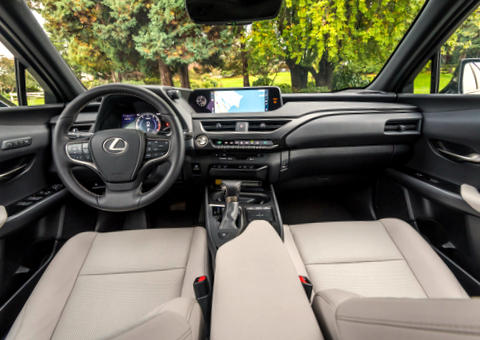
Gauges, including the hybrid management system on the 250h, are in clear sight. The controls are in easy reach, including those for the dual-zone automatic temperature system. The heated, leather-wrapped steering wheel contains audio telephone and voice controls and was adjustable by the power tilt and telescoping column.
The Lexus infotainment system includes the Enform service for the first 10 years. The eight-speaker system provides excellent sound to deliver SiriusXM/FM/CD/HDAM with MP3 playback capability. USB ports with iPod connectivity, Apple CarPlay, Amazon Alexa, music streaming via Bluetooth wireless technology and hands-free phone capability complete the system. All this is viewed through a 10.3-inch, high-resolution touch screen. The Verizon Wi-Fi, that can support up-to five devices, has complementary 4GB of data for one year.
I found the sound system interface to be needlessly cumbersome compared to the many other easier-to-use systems we experience at Clean Fleet Report. The trackpad was imprecise and caused too much eyes-off-the-road when going from function to function. It became a distraction and a safety issue when in tight city traffic.
Safety
The 2019 Lexus UX is well-equipped with active and passive safety features starting with the Lexus Safety System 2.0. It is easier for you to read about this feature-rich system here. Other safety items include 10 air bags, a tire pressure monitoring system, collapsible steering column, anti-theft alarm and engine immobilizer, rear view camera, blind spot monitor with rear cross traffic alert, rain sensitive wipers, Homelink rearview mirror, headlamp leveling and rear park assist.
Pricing and Warranties
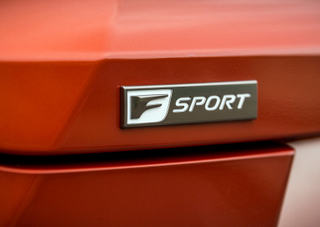
Because of a how the UX test cars we drove were equipped, it is possible to buy the more fuel efficient UX 250h for less than the UX 200. Clean Fleet Report’s 2019 Lexus UX 250h F Sport AWD had a MSRP of $36,000. Including $4,740 in options, the price came to $40,740. Our 2019 Lexus UX 200 had a MSRP of $34,000; adding-in $6,750 in options, the price was $40,750. Pricing excludes the $1,095 delivery fee.
The 2019 Lexus UX 250h comes with these warranties:
- Basic Four years/50,000 miles
- Powertrain Six years/70,000 miles
- Hybrid Eight years/100,000 miles
- Maintenance One year/10,000 miles
- Corrosion Six years/Unlimited Miles
- Roadside Four years/Unlimited miles
The UX 200 has the same warranty, but without the hybrid coverage.
Observations: 2019 Lexus UX 250h Hybrid F Sport AWD and the 2019 Lexus UX 200 FWD
The 2019 Lexus UX, offered with two power plants and in front and all-wheel drive, fills a gap in the Lexus crossover/SUV line-up. It is small, with aggressive styling, making it stand out from the other crossovers on the road. The UX may be the least expensive Lexus you can buy, but this does not mean there was any scrimping on build quality and materials. The interior is a most welcoming place offering comfort, style and all the tech you could want.
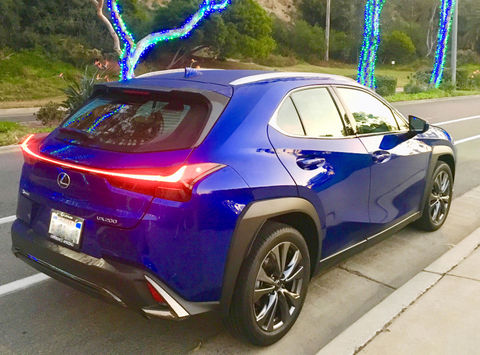
The UX shares a platform with the Toyota CH-R, which Clean Fleet Report reviewed last year. But other than some underpinnings, the Lexus UX is significantly different, as the level of luxury in the UX is impressive for a small crossover.
When visiting your Lexus dealer, take the time to drive both the gasoline and hybrid versions. Lexus has priced the two aggressively, so the hybrid should be a strong consideration. Ask to speak with a Lexus factory-trained specialist that will explain the hybrid technology in detail.
Whatever you end up buying, Happy Driving!
Make sure to opt-in to the Clean Fleet Report newsletter (top right of page) to be notified of all new stories and vehicle reviews.
Related Stories You Might Enjoy—Other Lexus News & Reviews
News: Lexus LS 500h Hybrid Is New Self-Driving Car Platform
Road Test: 2019 Lexus RX 450h Hybrid
Road Test: 2018 Lexus LC 500h (Larry’s view)
Road Test: 2018 Lexus LC 500h (Steve’s view)
Road Test: 2018 Lexus LC 500
Road Test: 2018 Lexus NX 300h (John’s view)
Road Test: 2018 Lexus NX 300h (Steve’s view)
Road Test: 2018 Lexus ES 300h
Road Test: 2018 Lexus LS 500h
Road Test: 2018 Lexus GS 450h
Disclosure:
Clean Fleet Report is loaned free test vehicles from automakers to evaluate, typically for a week at a time. Our road tests are based on this one-week drive of a new vehicle. Because of this we don’t address issues such as long-term reliability or total cost of ownership. In addition, we are often invited to manufacturer events highlighting new vehicles or technology. As part of these events we may be offered free transportation, lodging or meals. We do our best to present our unvarnished evaluations of vehicles and news irrespective of these inducements.
Our focus is on vehicles that offer the best fuel economy in their class, which leads us to emphasize electric cars, plug-in hybrids, hybrids and diesels. We also feature those efficient gas-powered vehicles that are among the top mpg vehicles in their class. In addition, we aim to offer reviews and news on advanced technology and the alternative fuel vehicle market. We welcome any feedback from vehicle owners and are dedicated to providing a forum for alternative viewpoints. Please let us know your views at publisher@cleanfleetreport.com.

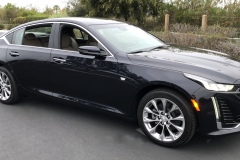
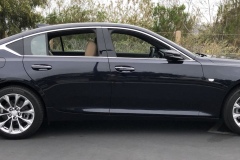
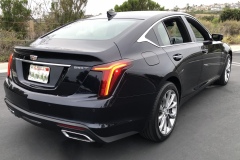
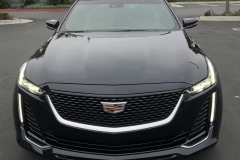
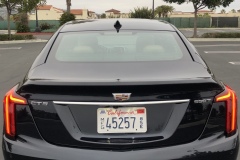
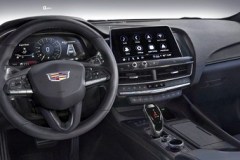
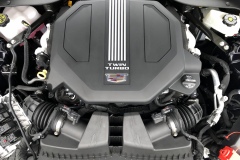
5 thoughts on “Comparison Test: 2019 Lexus UX 200 & 250h F Sport AWD”